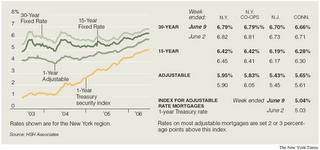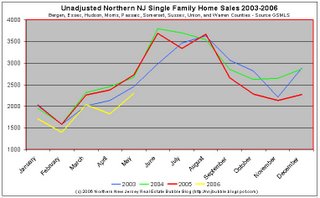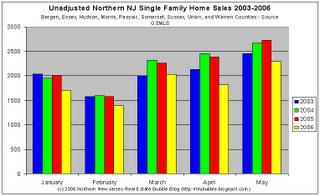Lowball! takes a look at home sales over the past week from a very different perspective. For those new to Lowball!, a lowball offer is when a buyer offers a significantly lower bid than asking in hopes that the seller accepts the offer. We take a list of home sales over the past week and pick out the sales that have the highest percentage difference between asking price and selling price.
The purpose of Lowball! is to show buyers that the market has changed and buyers now have considerably more leverage than sellers. Just a short time ago, Lowball! offers would have been laughed at and discarded, however, not any more. The fact that so many under-asking offers are being accepted is clear proof that the market is changing.The list does not contain all sales, I hand-pick the most interesting sales from the list. These listings might be the highest dollar drops, biggest percentage reductions, or sales in towns that are thought to still be 'hot'. Please note, even with double digit percentage reductions, these homes are still incredibly overpriced.
The list is straight off the top this week:
MLS# 2210660 - Roxbury Twp. (Victrian)
Original List Price: $199,000
List Price: $180,000
Sales Price: $94,000 (47.8% Loaball, 52.8% off OLP)
MLS# 2101635 - Newark City (Colonial)
Original List Price: $699,900
List Price: $599,999
Sales Price: $350,000 (41.7% Lowball, 50% off OLP)
MLS# 2254058 - Hillside Twp. (CapeCod)
List Price: $269,900
Sales Price: $185,000 (31.5% Lowball)
MLS# 2248565 - Clifton City (HalfDupl)
Original List Price: $299,000
List Price: $269,000
Sales Price: $190,000 (29.4% Lowball, 36.5% off OLP)
MLS# 2041025 - Nutley Twp. (TwnIntUn)
List Price: $499,900
Sales Price: $360,000 (28% Lowball)
MLS# 2245054 - Linden City (CapeCod)
Original List Price: $319,000
List Price: $279,901
Sales Price: $205,000 (26.8% Lowball, 35.7% off OLP)
MLS# 2112093 - Pohatcong Twp. (Colonial)
List Price: $99,999
Sales Price: $75,000 (25% Lowball)
MLS# 2262368 - Denville Twp. (RanchExp)
List Price: $459,900
Sales Price: $345,000 (25% Lowball)
MLS# 2268442 - Pompton Lakes Boro (HalfDupl)
List Price: $264,000
Sales Price: $200,000 (24.2% Lowball)
MLS# 2265508 - Jefferson Twp. (Bungalow)
List Price: $169,900
Sales Price: $130,000 (23.5% Lowball)
MLS# 2252043 - Jefferson Twp. (Ranch)
List Price: $299,000
Sales Price: $232,500 (22.2% Lowball)
MLS# 2255209 - Raritan Boro (Colonial)
List Price: $257,900
Sales Price: $205,000 (20.5% Lowball)
MLS# 2085529 - North Caldwell Boro (Contemp)
Original List Price: $2,740,000
List Price: $2,499,000
Sales Price: $2,000,000 (20% Lowball, 27% off OLP)
MLS# 2256768 - Sandyston Twp. (LogCabin)
List Price: $135,000
Sales Price: $110,000 (18.5% Lowball)
MLS# 2260721 - Roselle Boro (Colonial)
List Price: $219,900
Sales Price: $180,000 (18.1% Lowball)
MLS# 2234416 - Montclair Twp. (Victrian)
List Price: $1,200,000
Sales Price: $999,000 (16.8% Lowball)
MLS# 2228633 - Clark Twp. (CapeCod)
List Price: $404,900
Sales Price: $340,000 (16% Lowball)
MLS# 2237267 - Belleville Twp. (Colonial)
List Price: $299,999
Sales Price: $252,000 (16% Lowball)
MLS# 2103267 - Andover Twp. (Colonial)
List Price: $589,000
Sales Price: $500,000 (15.1% Lowball)
MLS# 2262395 - Roxbury Twp. (CapeCod)
List Price: $374,900
Sales Price: $320,000 (14.6% Lowball)
MLS# 2230169 - Parsippany-Troy Hills Twp. (RanchRas)
List Price: $334,999
Sales Price: $290,000 (13.4% Lowball)
MLS# 2220948 - Parsippany-Troy Hills Twp. (Bungalow)
List Price: $339,900
Sales Price: $294,500 (13.4% Lowball)
MLS# 2234948 - Lake Mohawk Sparta (Colonial)
List Price: $1,148,000
Sales Price: $995,000 (13.3% Lowball)
MLS# 2206145 - Morristown Town (Colonial)
Original List Price: $1,300,000
List Price: $1,149,900
Sales Price: $999,900 (13% Lowball, 23.1% off OLP)
MLS# 2110458 - Wantage Twp. (RanchExp)
Original List Price: $389,500
List Price: $379,500
Sales Price: $330,000 (13% Lowball, 15.3% off OLP)
MLS# 2250663 - Raritan Twp. (Ranch)
List Price: $250,000
Sales Price: $217,500 (13% Lowball)
MLS# 2200943 - Far Hills Boro (CapeCod)
List Price: $1,750,000
Sales Price: $1,525,000 (12.9% Lowball)
MLS# 2266126 - Rutherford Boro (FirstFlr)
List Price: $149,000
Sales Price: $130,000 (12.8% Lowball)
MLS# 2242664 - Bernardsville Boro (Custom)
List Price: $1,525,000
Sales Price: $1,332,000 (12.7% Lowball)
MLS# 2082010 - North Brunswick Twp. (Colonial)
List Price: $599,700
Sales Price: $525,000 (12.5% Lowball)
MLS# 2043004 - Far Hills Boro (Custom)
Original List Price: $3,500,000
List Price: $2,995,000
Sales Price: $2,645,000 (11.7% Lowball, 15.3% off OLP)
MLS# 2092121 - Saddle River Boro (Colonial)
Original List Price: $3,100,000
List Price: $2,995,000
Sales Price: $2,650,000 (11.5% Lowball, 15.3% off OLP)
MLS# 2256331 - South Orange Village Twp. (Colonial)
List Price: $699,000
Sales Price: $620,000 (11.3% Lowball)
MLS# 2258251 - East Hanover Twp. (SplitLev)
Original List Price: $589,900
List Price: $559,900
Sales Price: $500,000 (10.7% Lowball, 15.3% off OLP)
Caveat Emptor!
Grim



